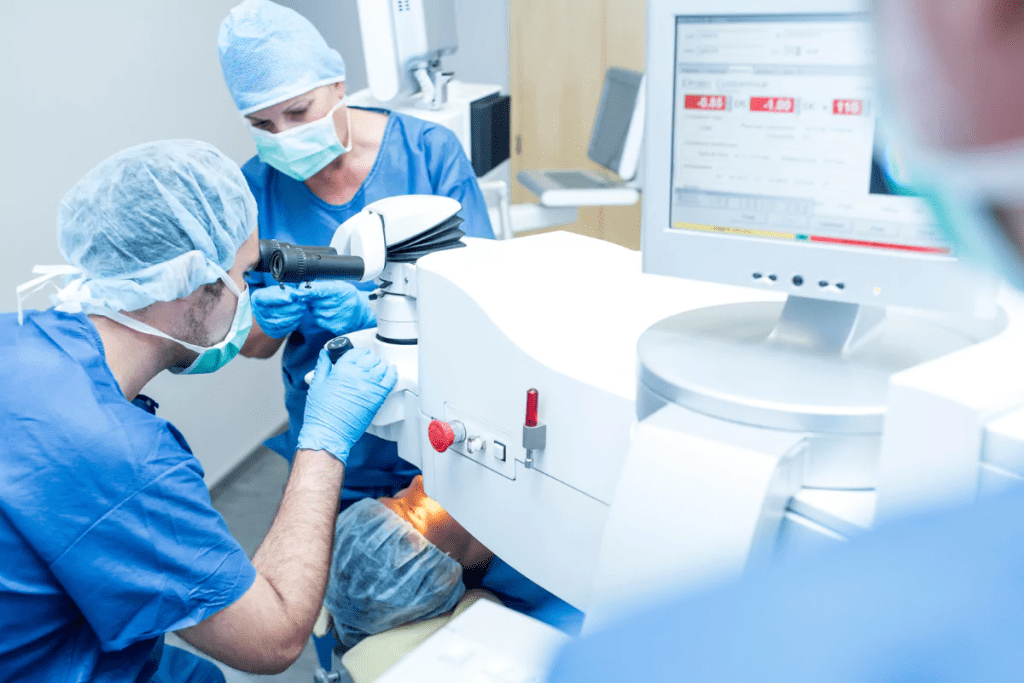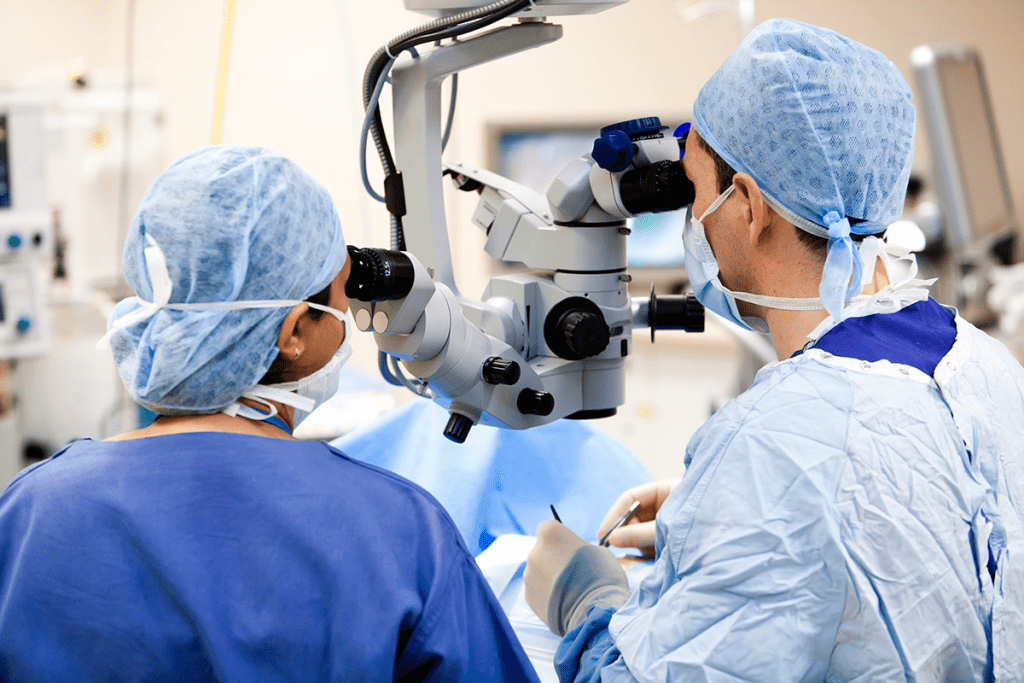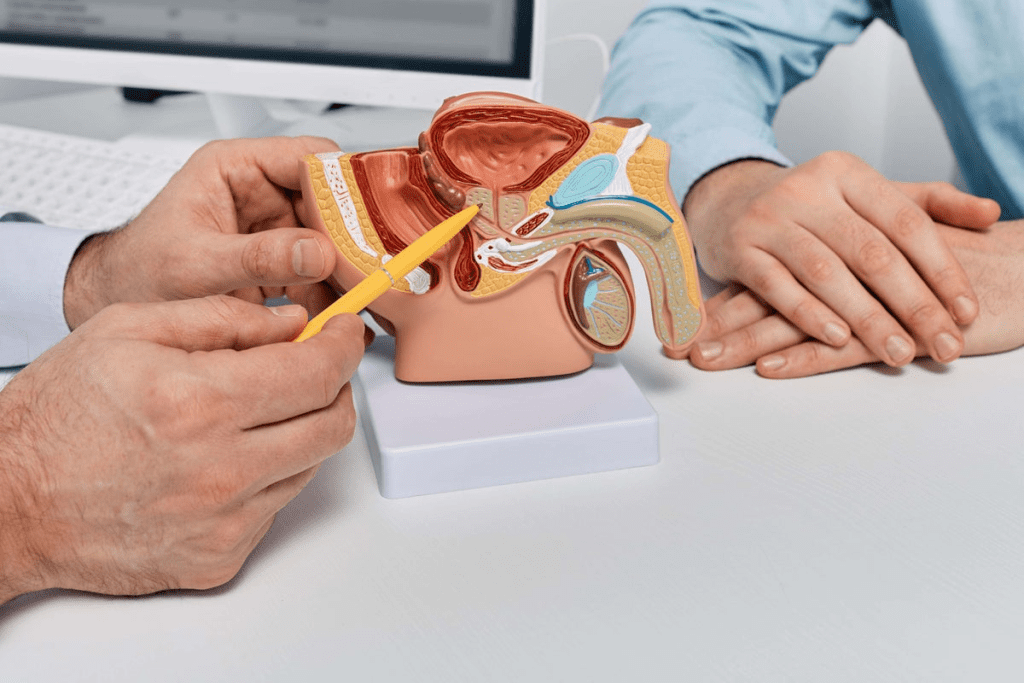Last Updated on October 31, 2025 by
PVP surgery reviewed with focus on impotence risks, side effects, and patient safety outcomes.
GreenLight laser surgery is a new way to treat BPH. It’s less invasive than old methods. But many worry it might harm their erectile function.

Studies have looked into how the greenLight laser affects erectile dysfunction. They found that erectile function might get worse after the surgery. This is true, even for those who were fine before.
Hospitals like Liv Hospital are leading the way. They use the latest research to improve patient care. They focus on how GreenLight laser surgery impacts impotence.
GreenLight laser surgery is a top choice for treating BPH. It uses photoselective vaporization of the prostate (PVP) to boost urine flow. This method is less invasive and aims to lessen BPH symptoms.

Photoselective vaporization of the prostate (PVP) is a key part of GreenLight laser surgery. It uses a strong laser to vaporize extra prostate tissue. This helps clear the blockage caused by BPH.
This technique is precise. It removes the tissue that blocks urine flow while keeping other areas safe. PVP offers quick relief from BPH symptoms like weak urine flow and needing to urinate often.
By shrinking the prostate, PVP improves how well you can urinate. This makes life better for those with BPH.
GreenLight laser technology uses a special wavelength of light. This light is absorbed by prostate tissue, allowing for accurate vaporization. The laser goes through a small scope in the urethra, making the procedure less invasive.
The surgery is done under local or general anesthesia. Most patients go home the same day. GreenLight laser is a good choice for BPH treatment, as it’s precise and has fewer risks than other surgeries.
PVP surgery and erectile function are closely linked. This is due to several anatomical and technical factors. PVP, or Photoselective Vaporization of the Prostate, treats Benign Prostatic Hyperplasia (BPH). Knowing how this surgery works is key to understanding its effects on erectile function.

The prostate gland is near nerves and blood vessels vital for erections. During PVP surgery, the precision of the laser technology helps avoid damage to these areas. Yet, the prostate’s close location to these areas poses a risk to erectile function.
Research shows that the risk of erectile dysfunction (ED) after PVP surgery varies. A study found that erectile function worsened in all groups post-surgery. The biggest decline was in those with normal erections before surgery. This underlines the need to consider preoperative erectile function when evaluating PVP surgery risks.
Nerve-sparing techniques are vital for keeping erectile function during PVP surgery. The use of advanced laser technology lets surgeons target the prostate tissue precisely. This reduces damage to nerves and lowers the risk of erectile dysfunction after surgery.
Surgeons use nerve-sparing techniques to protect the nerves during PVP surgery. These methods involve careful planning and execution. They aim to preserve the nerves responsible for erections, reducing the risk of erectile dysfunction.
Many studies have looked into how GreenLight laser treatment affects erectile function. This research is key to understanding its safety and effectiveness. It helps us see if there are any risks.
Research on GreenLight laser surgery’s short-term effects on erectile function is encouraging. Most studies show erectile dysfunction is rare in the short term. For example, a study in the Journal of Urology found that most patients kept their erectile function after the surgery.
Long-term studies are important to fully grasp GreenLight laser treatment’s effects on erectile function. Recent studies show erectile dysfunction remains rare over time. A long-term study found little change in erectile function, showing GreenLight laser treatment doesn’t usually cause ED.
The percentage of patients with erectile dysfunction after GreenLight laser surgery varies. But most studies show ED is rare. Clinical trials show most patients don’t see a big drop in erectile function. For instance, a study found that only a few patients reported new erectile dysfunction after the treatment.
In summary, the research supports GreenLight laser treatment as a safe and effective BPH treatment. It shows a low risk of erectile dysfunction. Patients considering this treatment can feel confident, knowing the low ED rates in both short and long-term studies.
Knowing the sexual side effects of GreenLight laser surgery is key. This procedure helps treat BPH but comes with its own set of issues. It’s important to understand the difference between retrograde ejaculation and erectile dysfunction.
Retrograde ejaculation and erectile dysfunction are two different side effects of prostate surgery. Retrograde ejaculation happens when semen goes into the bladder instead of coming out during orgasm. This is because the surgery messes with how semen is released.
Erectile dysfunction, on the other hand, is when a man can’t get or keep an erection for sex. These two issues are different, with different causes and effects on patients.
About 33% of patients experience retrograde ejaculation after GreenLight laser surgery. This means one-third of patients might face this issue after surgery. It’s important to note that retrograde ejaculation is not the same as erectile dysfunction, even though both can impact sex life.
Patients should talk to their doctors about their risks and worries. This way, they can make the best choices for their treatment.
Men with Benign Prostatic Hyperplasia (BPH) worry about erectile dysfunction (ED) when choosing treatments. GreenLight laser surgery is popular, but how does it stack up against other options?
Radical prostatectomy, which removes the prostate gland, has a higher ED rate than GreenLight laser surgery. ED rates after this surgery can be 56% to 66%. This depends on the patient’s age and the surgeon’s skill.
GreenLight laser surgery is more conservative. It keeps the prostate gland and surrounding tissues intact. This might lower the risk of ED.
Transurethral Resection of the Prostate (TURP) is another surgical option for BPH. It’s effective but carries a higher risk of ED and sexual side effects than GreenLight laser surgery. The ED risk with TURP is generally lower than with radical prostatectomy.
Other surgeries, like open prostatectomy and laser enucleation, have their own risks and benefits. GreenLight laser surgery is often chosen for its minimally invasive nature and lower complication risk, including ED.
Medication therapy is a common first choice for BPH. It uses alpha-blockers or 5-alpha-reductase inhibitors to ease symptoms. While effective, it can have side effects, including impacts on sexual function. The risk of ED with medication is generally lower than with surgery.
GreenLight laser surgery directly treats the obstructing prostate tissue. For some, the benefits of a definitive treatment may outweigh the risks. This is true, considering the long-term effects of ongoing medication therapy.
In conclusion, GreenLight laser surgery has a more favorable risk profile for ED compared to other BPH treatments. This comparison is key for patients and healthcare providers making treatment decisions.
The risk of ED with GreenLight laser surgery can be lowered. This is done by choosing the right patients, using advanced surgical methods, and providing careful post-care. These steps help patients get the best results from their treatment.
Choosing the right patient is key to lowering ED risk. Doctors look at the patient’s health, past medical issues, and how bad their BPH symptoms are. Those with a history of ED or at high risk need extra care.
The way the surgery is done is very important. Surgeons use nerve-sparing techniques and control the laser energy. This helps avoid harming nearby tissues.
Good care after surgery is vital. It helps avoid ED and makes recovery smoother. This includes watching for problems, managing pain, and helping with getting back to normal.
By focusing on these areas, doctors can greatly reduce ED risk from GreenLight laser surgery. This leads to better results for patients.
GreenLight surgery usually doesn’t hurt a man’s ability to have sex. Studies show that most men don’t see a big drop in their sexual function after the surgery. This is good news for those worried about losing their sexual abilities.
Looking at the research, GreenLight laser surgery is a good choice for men with BPH. It has fewer risks for erectile dysfunction compared to other treatments. This is because doctors are getting better at picking the right patients and using the latest techniques.
Men should know the good and bad of GreenLight laser surgery before deciding. It’s a promising option for treating BPH without harming sexual health. This makes it a solid choice for men looking to manage their symptoms while keeping their sex life intact.
GreenLight laser surgery is a modern way to treat prostate issues. It uses a laser to remove extra prostate tissue. This helps improve urine flow and reduces symptoms.
The GreenLight laser technology uses a laser to remove extra prostate tissue. This makes the prostate smaller and improves urine flow. It’s a minimally invasive method that aims to cause less damage.
Research shows GreenLight laser surgery rarely causes erectile dysfunction. Most patients see no drop in their ability to have an erection after the surgery.
Retrograde ejaculation and erectile dysfunction are two different issues. Retrograde ejaculation happens when semen goes into the bladder instead of coming out. Erectile dysfunction is when a man can’t get or keep an erection.
GreenLight laser surgery has a lower risk of erectile dysfunction than other treatments like radical prostatectomy and TURP. Medication can also help, but it might not work for everyone.
To lower the risk of ED, careful patient selection and surgical technique are key. Nerve-sparing techniques and proper post-operative care also play a role.
GreenLight laser surgery offers many benefits. It improves urine flow and reduces symptoms. It also has a low risk of complications, thanks to its minimally invasive nature.
About 33% of patients experience retrograde ejaculation after GreenLight laser surgery. This is a common side effect, but it is different from erectile dysfunction.
Subscribe to our e-newsletter to stay informed about the latest innovations in the world of health and exclusive offers!